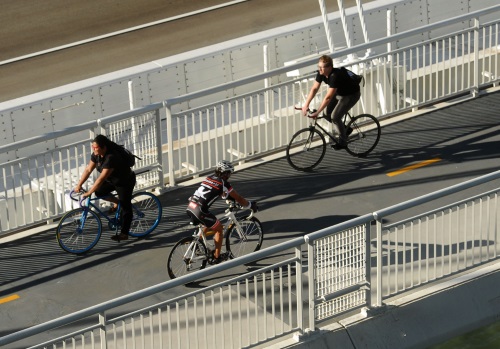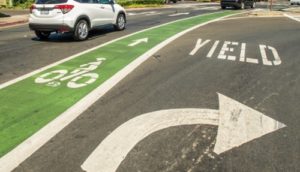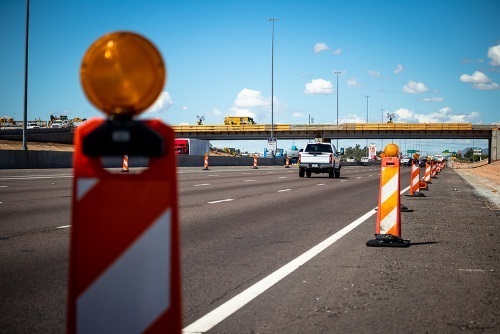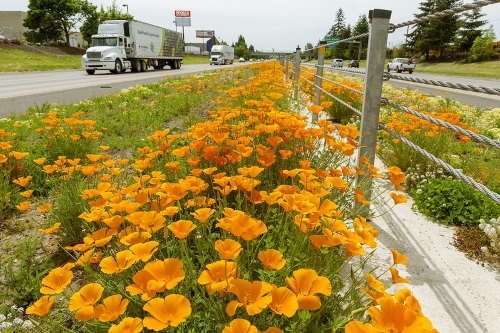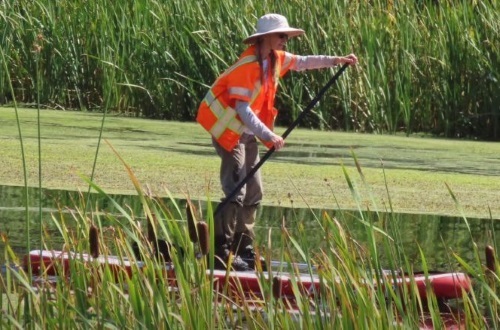A roundup of headlines curated for state transportation environmental professionals
FEDERAL ACTION
House Passes Fiscal 2021 Transportation Funding Bill – Transport Topics
At EPA, coronavirus disrupts research and raises questions over air quality impact – McClatchy
Climate Hawks Urge Biden to Shun Obama-Era Energy Moderates – Bloomberg Green
U.S. Department of Transportation Announces Nearly $5 Million to 4 New University Transportation Centers – USDOT (Press release)
Harris, Ocasio-Cortez introduce environmental justice bill – The Hill
COVID-19
Is the Subway Risky? It May Be Safer Than You Think – New York Times
New York City sets up quarantine checkpoints as it toughens state travel restrictions – CNBC
Chicago-Area Transit Agency Bosses on COVID-19’s Impact on Transportation – WTTW-TV
INFRASTRUCTURE RESILIENCE AND SUSTAINABILITY
Podcast: AASHTO’s Tymon Talks National Infrastructure Needs – AASHTO Journal
AASHTO’s Tymon Named a ‘Top 25 Newsmaker’ by ENR – AASHTO Journal
What’s in store for the future of infrastructure? – Infrastructure
Road Revenue Plummets – New Ways To Fund Infrastructure Projects Needed – CleanTechnica
NVTA adopts $539M funding program to reduce congestion in the region – Fairfax County Times
FEMA Offers $500M in Resilience Grants. An Opportunity for Microgrids & DERs? – Microgrid Knowledge
Florida Gov. DeSantis: 50 transportation projects were accelerated saving 650 calendar days of construction during COVID-19 pandemic – WTLV-TV
AIR QUALITY
The EPA is taking a ‘first step’ toward addressing Chelsea’s air quality problems – Boston.com
Why climate change is about to make your bad commute worse – Washington Post
ENVIRONMENTAL JUSTICE
Across America, Five Communities in Search of Environmental Justice – Great Lakes Now
NATURAL RESOURCES
With wildlife corridor plan, Virginia officials hope to reduce highway collisions with animals – Virginia Mercury
Finger Lakes Land Trust says toxic and harmful HABS most pressing threat to water quality – WHCU
New EPA guidelines on cost-benefits analyses are path to better forestry and much more – Crain’s Cleveland Business (Blog)
Judge Tosses Ranchers’ Challenge to Weakened Clean Water Rules – Courthouse News Service
CULTURAL RESOURCES
Historic preservation at Pima Air & Space is Absolutely Arizona – KGUN-TV
HEALTH AND HUMAN ENVIRONMENT/ACTIVE TRANSPORTATION
Going Dutch? New bicycle signal is part of a study on bike infrastructure – KGW-TV
Residents complain crosswalks are consuming curb space in ‘parking deprived’ Stamford – Stamford Advocate
The Problem With ‘Mobility as a Service’ – CityLab
Micromobility Isn’t Dead – Bloomberg
TRB RESOURCES/ANNOUNCEMENTS
TRB Webinar: Public Transit Ridership Trends – TRB (Webinar announcement)
Equity Analysis in Regional Transportation Planning Processes, Volume 2: Research Overview – TRB TCRP (Report availability)
TRB Webinar: How Women Fare in the Transit Industry – TRB (Webinar announcement)
Conference on Health and Active Transportation Circular – TRB
National Cooperative Highway Research Program (NCHRP) soliciting FY2022 problem statement submittals by November 2, 2020 – TRB NCHRP
Rescheduled: Advancing Demand Management in Resort Towns and Communities – FHWA Office of Operations
FEDERAL REGISTER NOTICES
Proposed Information Collection Request; Comment Request; General Administrative Requirements for Assistance Programs – EPA (Notice)
Notice of Availability of One Updated Chapter in the Environmental Protection Agency’s Air Pollution Control Cost Manual – EPA (Notice of availability and public comment period)
Public Water System Supervision Program Approval for the State of Illinois – EPA (Notice of tentative approval)
Requests for Nominations: National and Governmental Advisory Committees to the U.S. Representative to the Commission for Environmental Cooperation – EPA (Notice of request for nominations)
Endangered and Threatened Wildlife and Plants; Regulations for Listing Endangered and Threatened Species and Designating Critical Habitat – National Oceanic and Atmospheric Administration (Proposed rule)
Notice of Indirect Cost Rates for the Damage Assessment, Remediation, and Restoration Program for Fiscal Year 2018 – National Oceanic and Atmospheric Administration (Notice)

